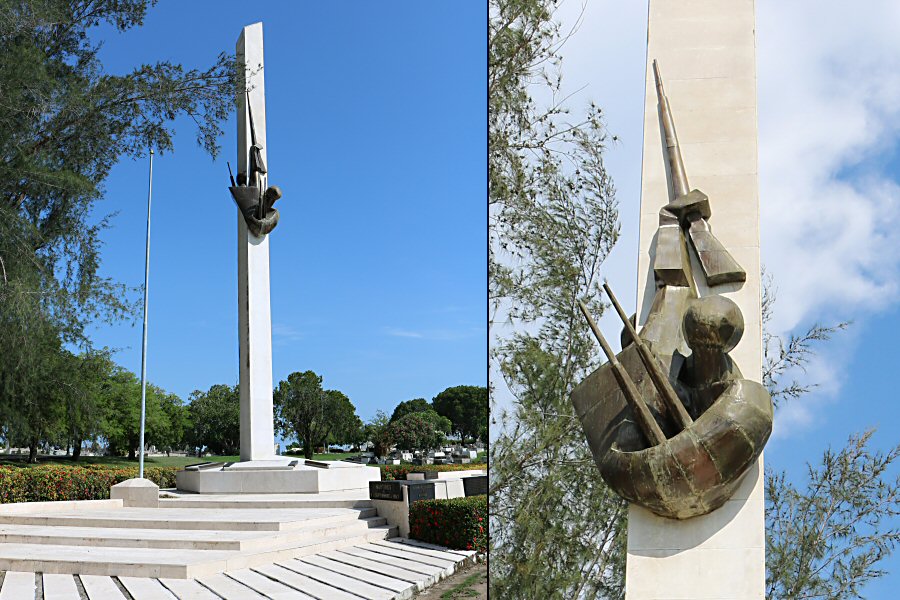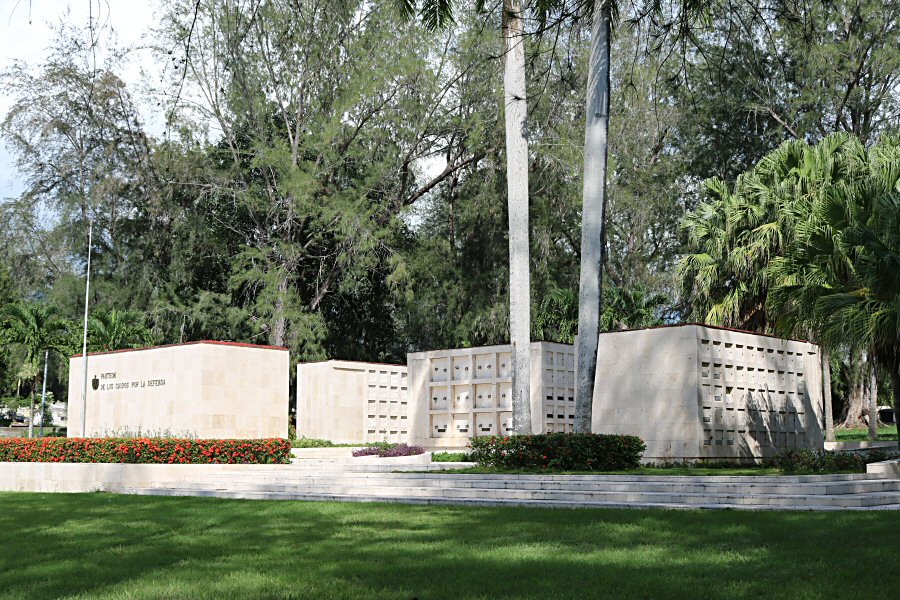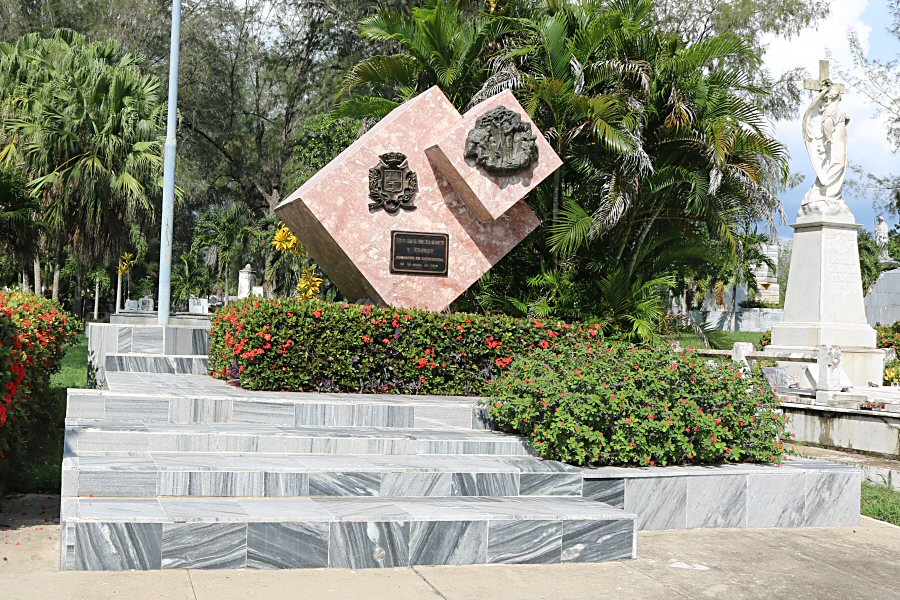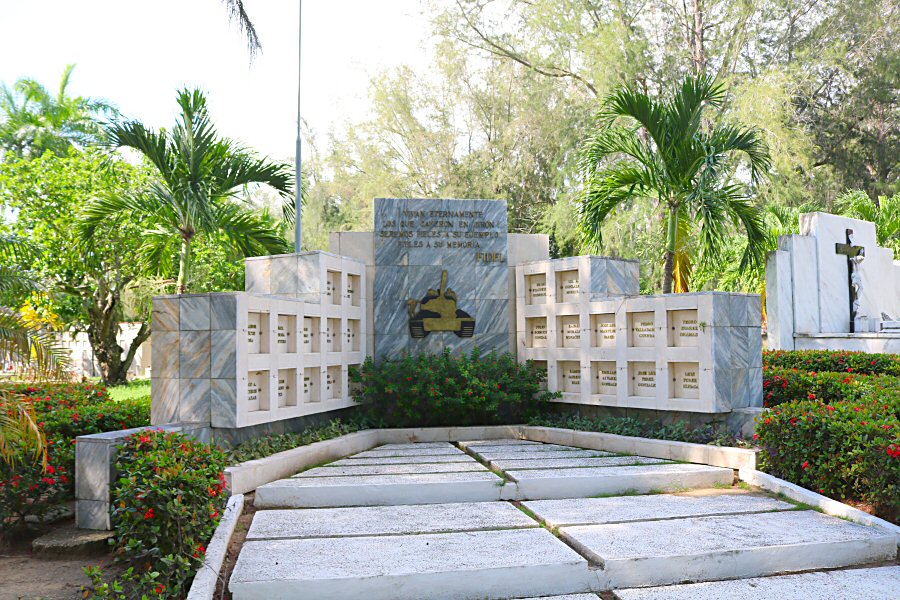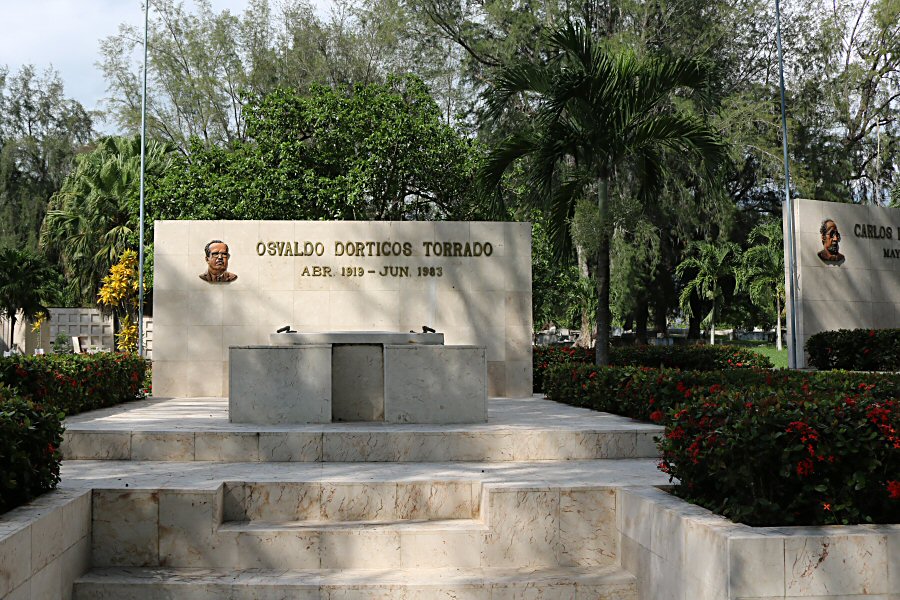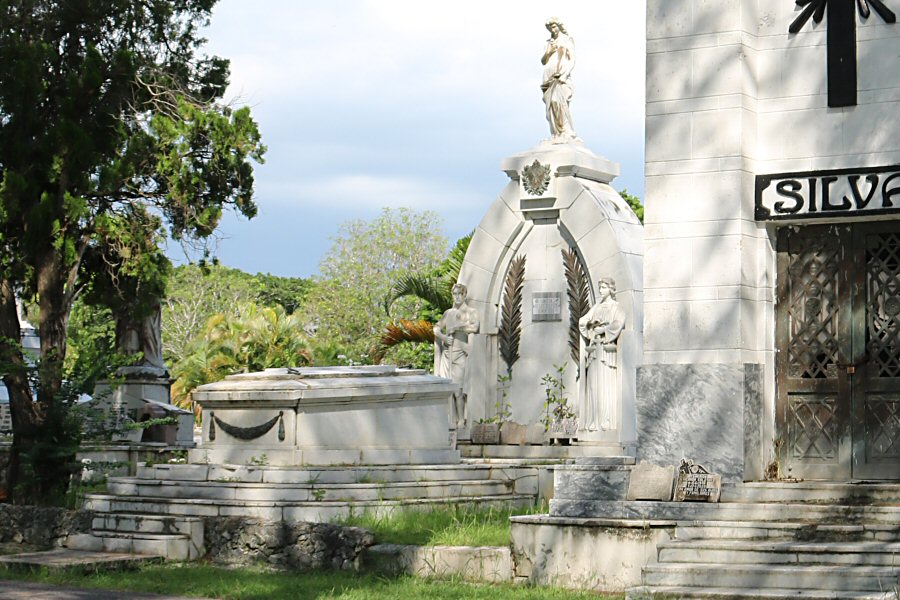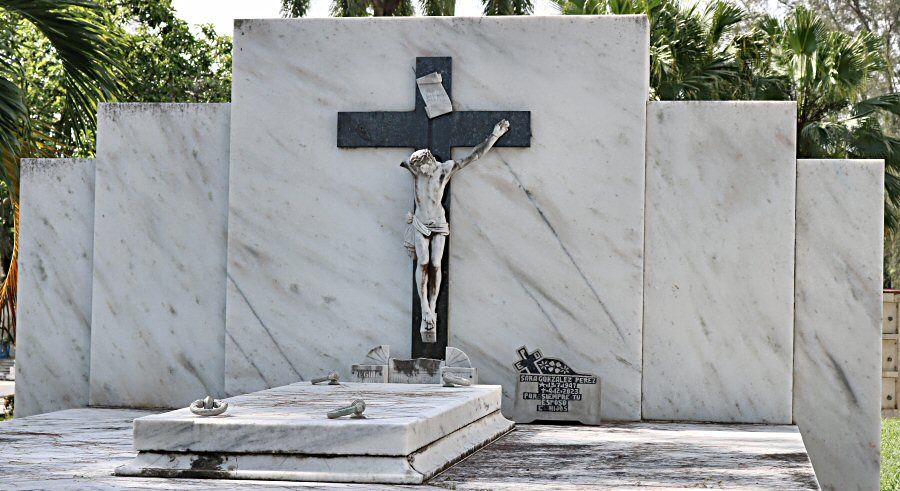
The cemetery is built on a total of 17,6 hectares of land.
It is entered by passing through the administrative
building. The administrative building of the cemetery has an
impressive façade in neoclassical design. It was supported
by 64 Doric columns, so that it resembles the Parthenon in
Athens, Greece.
The administrative building is consisting of an archive that collects all the documentation since its opening, two offices, bathrooms, a mortuary chapel, an obituary room and a museum room.
The cemetery is divided into several sections by walkways illuminated by street lights. Different species of trees are planted along each walkway, giving it names such as Los Pinos, Los Tamarindos, Los Mangos, Los Cipreses. The tombs, mausoleums and pantheons stand harmoniously in a beautiful natural environment. The cemetery awaits its visitors like a quiet grove.
The layout of the cemetery, its afforestation and its decoration with ornamental trees are perfectly designed. The aesthetics of the numerous monumental sculptures add further richness to the appearance of the cemetery. However, it is possible to see these beautiful sculptures from another perspective. The necropolis, despite having been built for the poor in accordance with the benefactor's wishes, the tombs of the rich are located in the highest part of the necropolis with their ornaments and sculptures, made of high-quality Carrara marble, brought from Italy, while the graves of the poor are simply buried in the ground. Wealthy families competed with each other in making the most perfect tomb for their dead. As a result, artisans, masons and carpenters from marble factories and companies flocked to the city.
The Tomás Acea Cemetery is the resting place of many famous figures from the history, culture and sciences of Cienfuegos.
The obelisk is dedicated to the martyrs of September 5, 1957. Nearly 200 people, consisting of civilians and sailors at the Naval Base in Cienfuegos, supported the uprising, which was started nationwide on September 5, 1957. The main target was the Presidential Palace and the Navy General Staff in Havana. The city of Cienfuegos came under the rule of revolutionaries for 24 hour. Fulgencia Batitista, the bloody dictator, sent the army and supressed the uprising by bombarding the neighborhoods and scanning the houses with machine guns, leaving dozens of deaths and injuries behind.
The obelisk was designed by the sculptor Evelio Lecuor and the architects Daniel Taboada Espiniella and Enrique Capablanca.
The mausoleum dedicated to the veterans of the War of Independence, is just after the entrance. After this, you come across the mausoleum belonging to Luis Lorenzo De Clouet y Piette, who founded the colony of Fernandina de Jagua (today's Cienfuegos) in 1819. On the side are the mausoleums of Osvaldo Dorticós Torrado, one of the Cuban presidents of the Republic, and Carlos Rafael Rodríguez, a Cuban intellectual who led the Cuban Communist Party for many years.
Other important monuments include the monument erected in memory of the Cienfuegos people who died for the internationalist mission in Africa, and the memorial dedicated to the martyrs of the invasion of Playa Girón.
The tomb of the eminent actress Luisa Martínez Casado (1860-1925), the glory of the Cuban theater, should also not to be forgotten.
There are also pantheons that are very important for many believers, such as the statue of the Virgen de la Milagrosa in section D and that of the Virgen de la Caridad carved in stone in section C. Another image that is always glorified is the of Santa Teresa, made of Carrara marble. It is said that she is always clean and shiny, because many people take care of her and respect her and constantly place flowers on her.
Finally one should know that no one from the Acea family is buried in this cemetery.
The Cementerio Tomás Acea was declared a National Monument in 1978 due to its cultural and architectural values
The administrative building is consisting of an archive that collects all the documentation since its opening, two offices, bathrooms, a mortuary chapel, an obituary room and a museum room.
The cemetery is divided into several sections by walkways illuminated by street lights. Different species of trees are planted along each walkway, giving it names such as Los Pinos, Los Tamarindos, Los Mangos, Los Cipreses. The tombs, mausoleums and pantheons stand harmoniously in a beautiful natural environment. The cemetery awaits its visitors like a quiet grove.
The layout of the cemetery, its afforestation and its decoration with ornamental trees are perfectly designed. The aesthetics of the numerous monumental sculptures add further richness to the appearance of the cemetery. However, it is possible to see these beautiful sculptures from another perspective. The necropolis, despite having been built for the poor in accordance with the benefactor's wishes, the tombs of the rich are located in the highest part of the necropolis with their ornaments and sculptures, made of high-quality Carrara marble, brought from Italy, while the graves of the poor are simply buried in the ground. Wealthy families competed with each other in making the most perfect tomb for their dead. As a result, artisans, masons and carpenters from marble factories and companies flocked to the city.
The Tomás Acea Cemetery is the resting place of many famous figures from the history, culture and sciences of Cienfuegos.
The obelisk is dedicated to the martyrs of September 5, 1957. Nearly 200 people, consisting of civilians and sailors at the Naval Base in Cienfuegos, supported the uprising, which was started nationwide on September 5, 1957. The main target was the Presidential Palace and the Navy General Staff in Havana. The city of Cienfuegos came under the rule of revolutionaries for 24 hour. Fulgencia Batitista, the bloody dictator, sent the army and supressed the uprising by bombarding the neighborhoods and scanning the houses with machine guns, leaving dozens of deaths and injuries behind.
The obelisk was designed by the sculptor Evelio Lecuor and the architects Daniel Taboada Espiniella and Enrique Capablanca.
The mausoleum dedicated to the veterans of the War of Independence, is just after the entrance. After this, you come across the mausoleum belonging to Luis Lorenzo De Clouet y Piette, who founded the colony of Fernandina de Jagua (today's Cienfuegos) in 1819. On the side are the mausoleums of Osvaldo Dorticós Torrado, one of the Cuban presidents of the Republic, and Carlos Rafael Rodríguez, a Cuban intellectual who led the Cuban Communist Party for many years.
Other important monuments include the monument erected in memory of the Cienfuegos people who died for the internationalist mission in Africa, and the memorial dedicated to the martyrs of the invasion of Playa Girón.
The tomb of the eminent actress Luisa Martínez Casado (1860-1925), the glory of the Cuban theater, should also not to be forgotten.
There are also pantheons that are very important for many believers, such as the statue of the Virgen de la Milagrosa in section D and that of the Virgen de la Caridad carved in stone in section C. Another image that is always glorified is the of Santa Teresa, made of Carrara marble. It is said that she is always clean and shiny, because many people take care of her and respect her and constantly place flowers on her.
Finally one should know that no one from the Acea family is buried in this cemetery.
The Cementerio Tomás Acea was declared a National Monument in 1978 due to its cultural and architectural values
